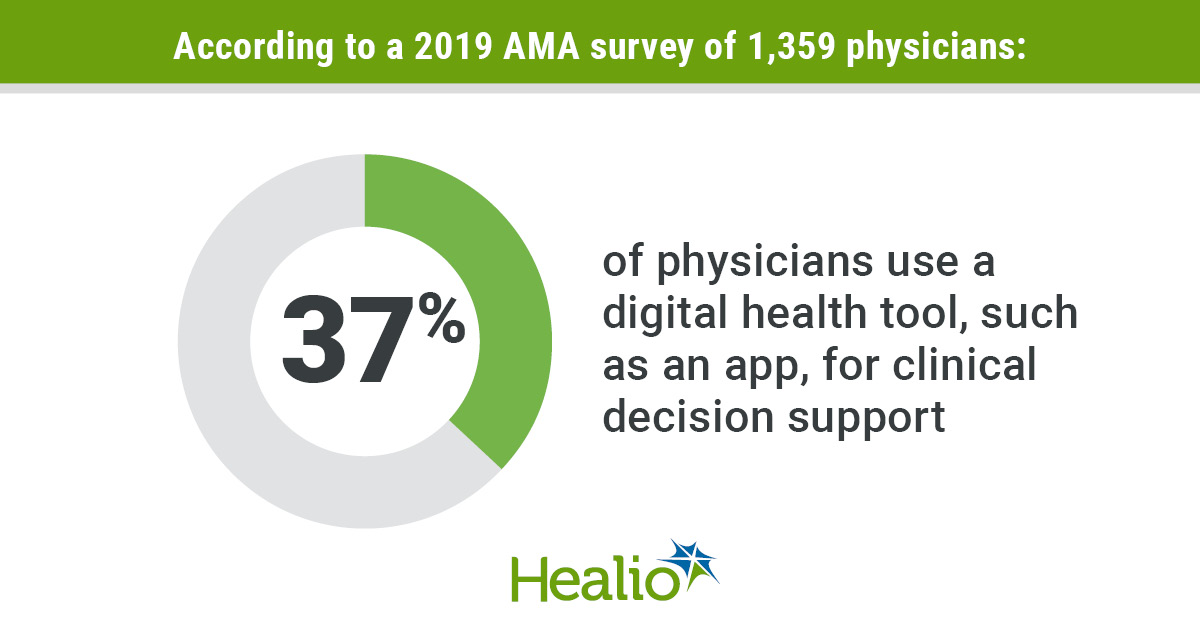App narrows down data searches in the ED to 5 seconds

In the ED, time is critical. Researchers have developed an app that they say can help physicians cut the time they need to retrieve clinical information from systems outside the electronic health records from several minutes to as little as 5 seconds in an emergency setting.
“There are many times in emergency rooms where physicians have to urgently react to clinical conditions,” Titus Schleyer, DMD, PhD, one of the app’s developers, told Healio Primary Care. “Inefficiencies in accessing relevant information become even more grave when you have little time.”
According to Schleyer, the unnamed app — developed by the Regenstrief Institute, the Indiana Health Information Exchange, Indiana University Health and Indiana University School of Medicine — makes it easier and faster for clinicians to access information that is not found in a patient’s electronic health record.
“Often, retrieving information from outside systems requires quite a bit of effort, such as logging in, searching for the information and then remembering it after going back to the EHR,” he said. “Our app puts the outside information directly into the EHR, so it is only a few clicks — and seconds — away. The clinician can invest the effort saved for information retrieval to work on the patient's problem instead.”

The app can be used on patients with chest pain, abdominal pain, headache, weakness and dizziness, back pain, pregnancy, heartbeat irregularities or trouble breathing. The application programming interface known as Fast Healthcare Interoperability Resources, which allows EHRs to communicate with third-party apps quickly by using a common language, provides the mechanism that syncs up the app with EHRs, according to a press release.
The app was part of a presentation at American Medical Informatics Association Summit in 2019, according to Schleyer. It is presently being rolled out to EDs in the Indiana University Health System, where it is being fined-tuned, said Schleyer, who is also a research scientist at the Center for Biomedical Informatics of the Regenstrief Institute. Details about when the app will be available nationally and its cost are expected by 2022.
‘A lot to gain’
A 2019 AMA survey of 1,359 physicians found that 37% of physicians use a digital health tool, such as an app for clinical decision support. In addition, a 2019 npj Digital Medicine study stated that health and wellness apps that consumers use are not evidence-based or evaluated for effectiveness before they reach the marketplace.

Kenneth W. Dion, PhD, MSN, RN, MBA, FAAN, assistant dean for business innovation and strategic relationships at Johns Hopkins University School of Nursing, told Healio Primary Care that the Regenstrief app provides other benefits besides saving time.
“Apps like this also allow providers to rapidly search narrative in patient documentation,” he said. “This will facilitate the return of narrative charting rather than just checking ‘yes’ or ‘no’ boxes on an EHR. It is in the richness of the narrative where individual nuances of patient conditions and the differential diagnosis live.”
Dion, who was one of the early innovators of EHRs, added that the app could pave the way for even more efficient health care.
“Tools like this could also providers to return to narrative charting which will be done via smartphone using voice recognition in real-time during the patient encounter,” he said, adding that these types of apps have two potential downsides.
“First, if the efficiency created is converted to an expectation of increased patient throughput, provider burnout and its effects such as turnover or departure from the profession will continue to rise,” Dion explained. “Second, if addition time made available is not translated into a thorough patient assessment, the provider could end up treating the app rather than the patient which could lead to serious untoward outcomes.”

Physicians have “a lot to gain” from the app and others like it, according to Priya Radhakrishnan, MD, chief academic officer for HonorHealth in Scottsdale, Arizona.
“It is not uncommon for patients to present at different EDs with chest pain or abdominal pain or heart failure exacerbation and have a complete workup mainly due to lack of access to information. For clinically integrated systems, with downside risk, there is a lot to gain [from using this app],” she said.
However, Radhakrishnan noted that there are several barriers to using this type of technology in an ED.
“An app’s data is only as good as the data that is inputted,” Radhakrishnan said. “While apps are an area that entrepreneurs and researchers have the opportunity to innovate, the costs continue to burden the already taxed health system.” – by Janel Miller
Reference:
AMA. Physicians’ motivations and requirements for adopting digital health adoption and attitudinal shifts from 2016 to 2019. https://www.ama-assn.org/about/research/ama-digital-health-care-2016-2019-study-findings. Accessed Feb. 27, 2020.
Carlo AD, et al. NPJ Digit Med. 2019;doi:10.1038/s41746-019-0129-6.
Disclosures: Dion, Radhakrishnan and Schleyer report no relevant financial disclosures.
